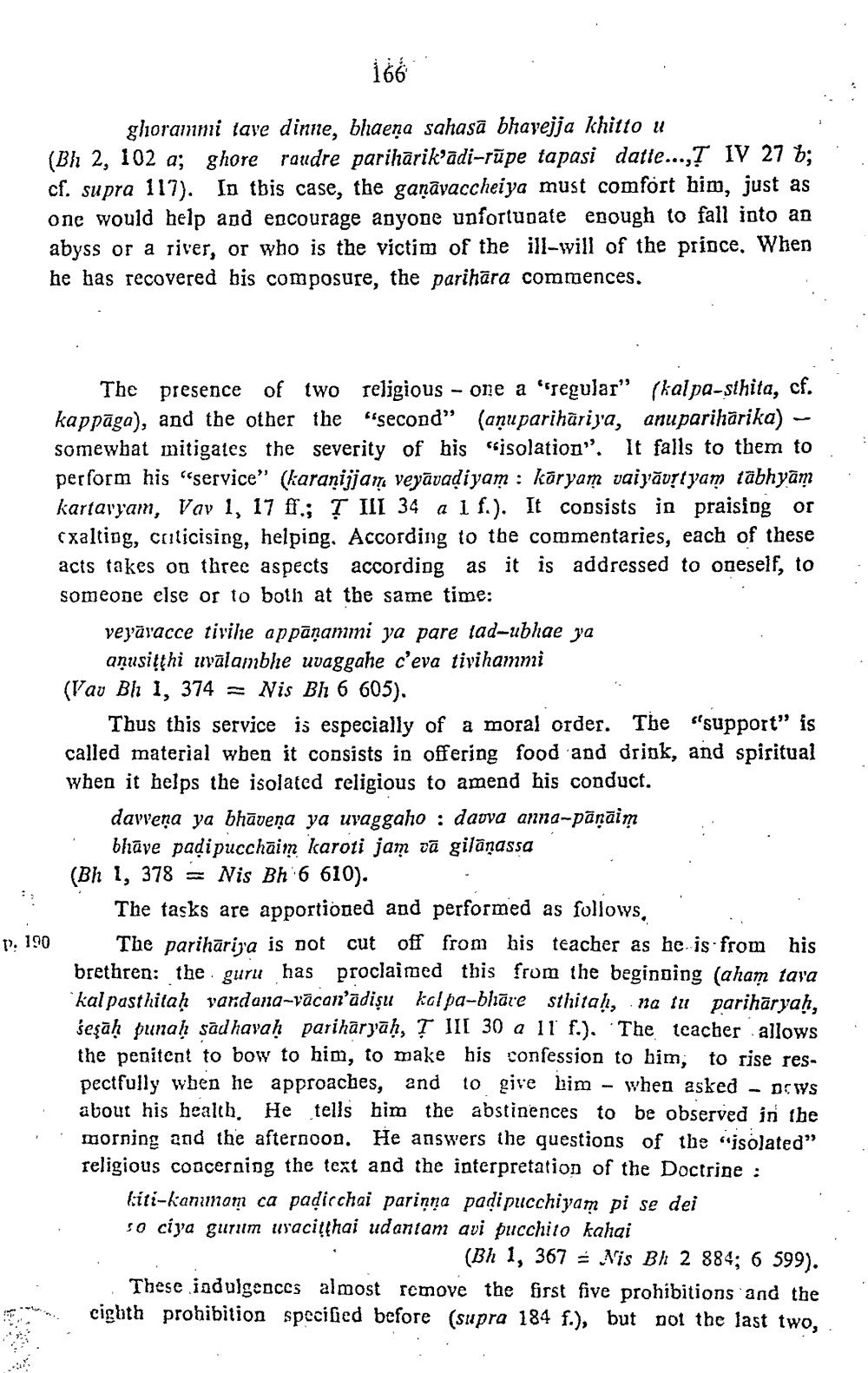________________
gliorammi tave dinne, bhaeņa sahasa bhayejja khitto u (Bh 2, 102 a; ghore raudre pariharik’adi-rūpe tapasi datte...,? IV 27 t;. cf. supra 117). In this case, the gañāvaccheiya must comfört him, just as one would help and encourage anyone unfortunate enough to fall into an abyss or a river, or who is the victim of the ill-will of the prioce. When he has recovered bis composure, the parihara commences.
The presence of two religious - one a "regular" (kalpa-sthita, cf. kappāga), and the other the "second" (aņuparihariya, anupariharika) – somewhat mitigates the severity of his "isolation". It falls to them to perform his "service" (karanijjam veyāvadiyam: kāryam vaijāurtyam tabhyām kartaryam, Vav 1, 17 ff.; Ţ Ill 34 a lf.). It consists in praising or cxalting, criticising, helping. According to the commentaries, each of these acts takes on three aspects according as it is addressed to oneself, to someone else or to both at the same time:
veyāvacce tivile appāņamii ya pare tad-ubhae ya
anusitthi walambhe uvaggahe c'eva tivihammi (Vav Bh 1, 374 = Nis Bh 6 605).
Thus this service is especially of a moral order. The “support" is called material wben it consists in offering food and drink, and spiritual when it helps the isolated religious to amend his conduct.
davvena ya bhāveņa ya uvaggaho : dauva anna-pāņāim
bhāve padipucchāim karoti jam vā gilānassa (Bh 1, 378 = Nis Bh 6 610).
The tasks are apportioned and performed as follows,
The parihārija is not cut off from his teacher as he is from his brethren: the guru has proclaimed this from the beginning (aham taya 'kal pasthitah yardana-vācan'adişu kol pa-blāre sthitah, na tu parihāryah, seşāḥ punaḥ sādhavah pariharyāḥ, ? III 30 a 11 f.). The teacher allows the penitent to bow to him, to make his confession to him; to rise respectfully when he approaches, and to give him - when asked - DCWS about his health. He tells him the abstinences to be observed in the morning and the afternoon. He answers the questions of the isolated" religious concerning the text and the interpretation of the Doctrine :
kiti-kaninam ca padicchai parinna padi pucchiyam pi se dei so ciya gurum usacitthai udantam avi bucchito kahai
(Bh 1, 367 = Nis Bh 2 884; 6 599). These indulgences almost remove the first five prohibitions and the cighth prohibition specified before (supra 184 f.), but not the last two,
p. 190
-8871




